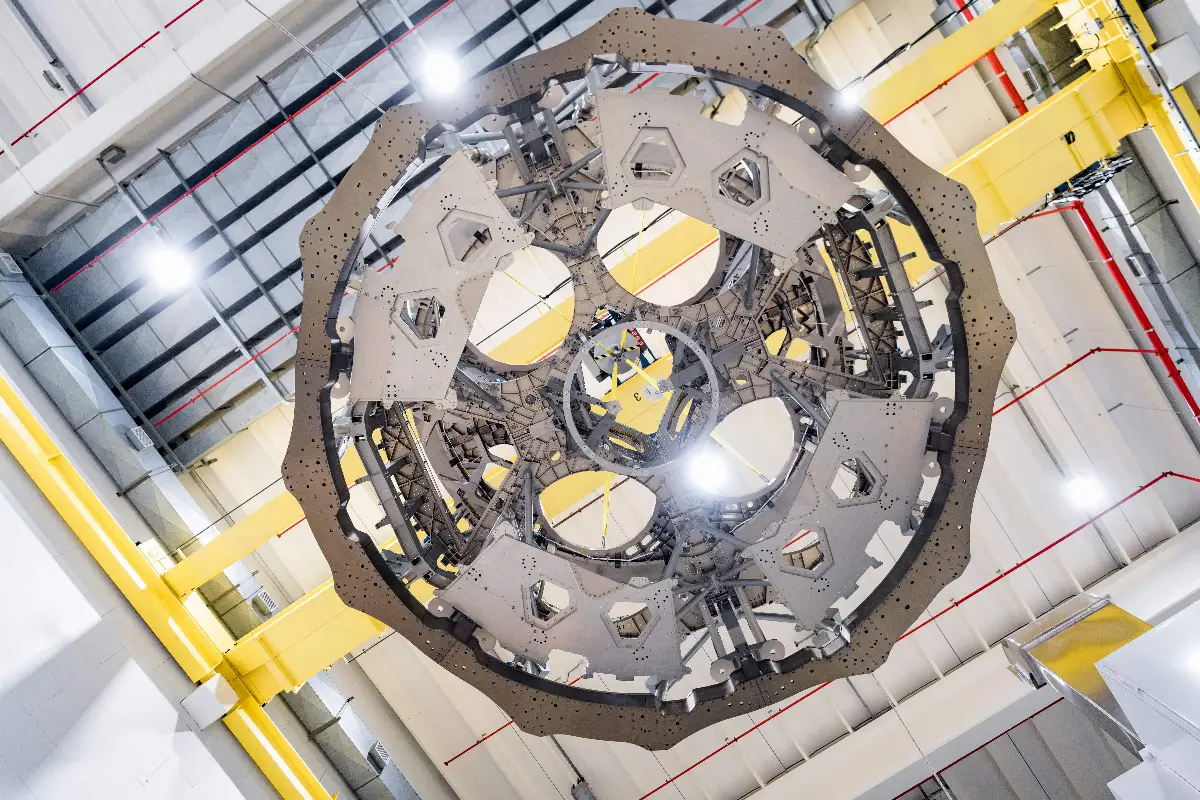
ESM-4 (2). TAS: a new major achievement paving the way to manned lunar exploration
Thales Alenia Space supplies essential subsystems for all six modules

The European Service Module-4 (ESM-4) dedicated to NASA’s Orion spacecraft has successfully completed its integration at Airbus’ facilities in Bremen, Germany. It is now being prepared for shipment to the Kennedy Space Center in Florida, where it will be assembled and tested with Orion’s Crew Module, a major milestone that paves the way for the next chapter of NASA’s Artemis program. This ambitious international effort aims to support the return of astronauts to the Moon and lay the groundwork for future exploration beyond.
A key contributor to Orion’s European Service Module
Thales Alenia Space provides critical subsystems for all 6 modules to Airbus Defence and Space, ESM prime contractor, including the structure, thermal control system and main life support capabilities. As part of the Artemis contribution enabled by key industrial partners in Europe, the entire primary and secondary structure, the thermal control system (TCS) comprising radiators and consumable service system (CSS) including Potable water, Oxygen and Nitrogen distribution system for European Service Modules that fly NASA’s Orion spacecraft to the Moon, are designed and built in Thales Alenia Space premises in Turin, Italy. Technicians assemble the primary structure that is made from a core of Composite Fiber Reinforced Polymer sandwich panels and aluminum alloy elements for the secondary structures.
This technology keeps the European Service Module light enough to fly farther and longer but strong enough to keep its shape. Thales Alenia Space also supplies 4 water tanks and six radiators for the European Service Modules forming fully redundant TCS and CSS systems. The pre-assembled structures are transported from Turin to Bremen, Germany, where Thales Alenia Space’s teams, alongside Airbus ones, will complete the installation and test of TCS and CSS. This is the first step in order to allow their voyage to the Moon.
Getting ready for Artemis II
These components are essential to ensuring mission safety, allowing astronauts to live and work in secure and sustainable conditions throughout their journey. Next year, the ESM-2 will be launched as part of the Orion spacecraft for the Artemis II mission. This historical event to come will mark the first crewed deep-space journey since Apollo, a powerful reminder of humanity’s potential when science and international collaboration align.
Thales Alenia Space teams have always worked with dedication and passion, even during the most challenging times, including the COVID period, and overcoming numerous complications to ensure the on-time delivery of the ESM-4. Their commitment has been instrumental in achieving this success.
Thales Alenia Space, the leading European player in lunar exploration
Each module and system delivered represents not only a technological triumph but also a shared ambition to make human exploration beyond Earth a reality. ESM-4 will soon play a pivotal role in Artemis IV, guiding the Lunar I-HAB module to the Lunar Gateway, where it will connect with HALO (Habitation and Logistics Outpost). Together, these modules will form the backbone of a new orbital outpost, a bridge between Earth and the Moon that will serve as the foundation for future lunar missions and deep-space exploration.
Future technologies on the lunar surface
Each of these elements will enable astronauts to live, work, and conduct research in lunar orbit for the first time in human history, reflecting Thales Alenia Space’s commitment to a stable human presence in space and the development of safe, comfortable infrastructure for crews. Leveraging this legacy, Thales Alenia Space is also leading efforts to extend human presence to the lunar surface. Early 2025, the company won a major ESA contract to develop the Argonaut lunar lander, an autonomous module designed to deliver cargo, vehicles, and scientific payloads to the Moon, with its first mission targeted for 2030. In parallel, the Italian Space Agency (ASI) selected the company in 2023 to supply the Multi-Purpose Habitation module, enabling astronauts to live and work on the lunar surface safely and comfortably. Featuring a smart architecture promoting mobility and energy autonomy, the MPH module will ensure the supply of water, energy and vital resources, while relying on advanced local production and recycling systems. This infrastructure is a crucial step toward establishing a sustainable human presence on the Moon. As part of ESA's MoonLight program, our company will also supply the space navigation segment orbiting around the Moon, comprising 4 navigation satellites.
AVIONEWS - World Aeronautical Press Agency